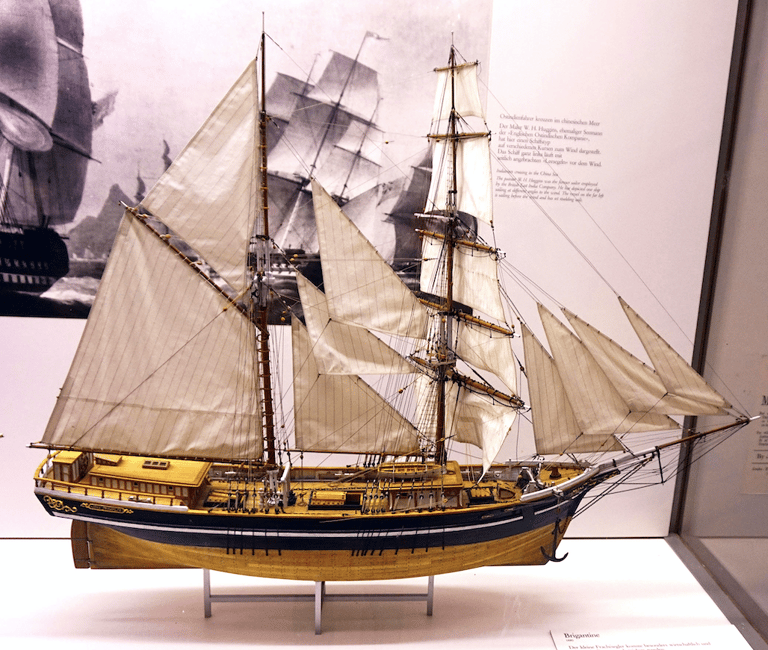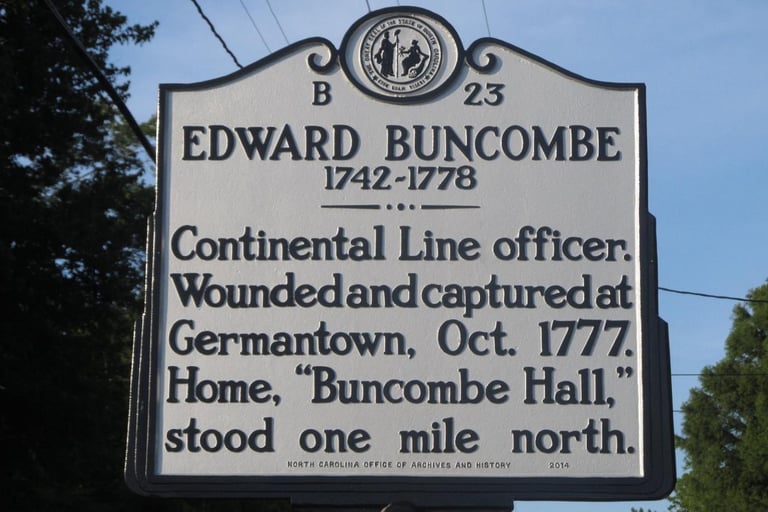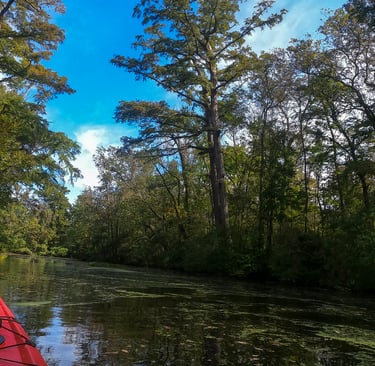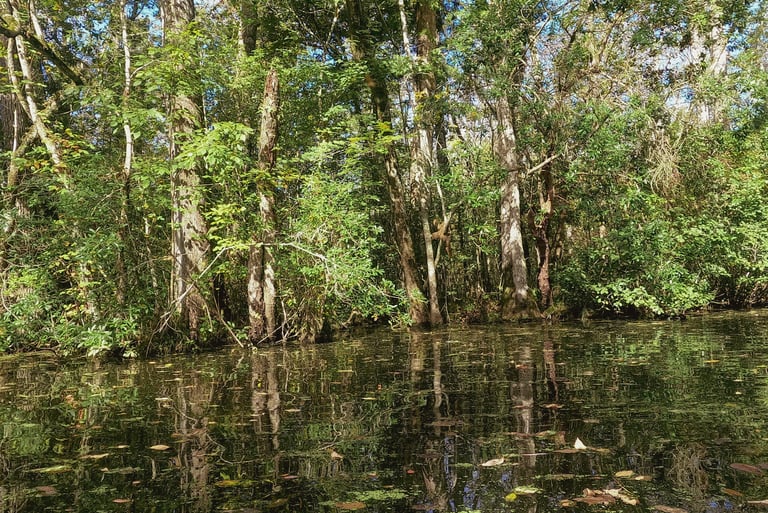The “Legend of the Guinea Hole”
Once upon a time, there was a creek that ran from the East Dismal Swamp, in Washington County, North Carolina, to the Albemarle Sound. The creek winds through several miles of low farmland and primeval swamp, emptying into the western end of the Albemarle Sound. Nobody remembers how Kendrick's Creek got its name. The origin of the name remains a mystery as dark as the water that flows in the creek. The creek runs deep for its size, deep enough that a brigantine may travel several miles up the river. Deep enough that legends of a bottomless hole are born.
In 1732, Joseph Buncombe, an Englishman who had moved to St. Kitts, in the British West Indies, left his island home and came to the South Shore of the Albemarle in search of "fair women and fertile land". He purchased 105 acres of land bounded on the east by Kendrick's Creek and on the South by Beaver Dam Branch, but he ultimately settled across the Chowan River from Edenton and never developed the land.
About 35 years later, in 1767, Edward Bumcombe, the nephew of Joseph Bumcombe, commissioned Stephen Lee, of Lee's Mills to build a dwelling, the site of which is near Kendrick's Creek and the Crossroad. He came with his wife several months later, accompanied by several ships loaded with farming equipment, tools, seeds, furniture, livestock, and slaves. The landing is located about three miles upstream from Mackey's Marina, and you can still see the remnants of the landing today. The legend of the Guinea Hole begins during the unloading of those ships.
It might be hard to imagine an ocean-going brigantine with towering masts and flowing sails being towed by a longboat manned by eight hardy boatmen who sang a shanty as they rowed upstream, and seamen with long poles standing on the ship to push it from the banks and around the winding bends to the Buncombe plantation landing but this was a common sight on Kendrick's Creek at the time. The dark waters are unusually deep near the landing, which is why it came to be known as the "Guinea Hole". The ship from the West Indies was discharging cargo at Buncombe Landing as the legend unfolds.
One of the crewmen aboard that ship had recently made a trip aboard a “Slaver” to Guinea, in Northwest Africa. The crewman recognized some of the men handling the cargo as natives of Guinea. When he informed them that he had recently visited that country, they became quite excited and asked the crewman to point in the direction of their country. The crewman attempted to convey to the enslaved men that Guinea was on the other side of the world by pointing straight down into the deep, dark water of Kendrick's Creek. The native people of Guinea had no knowledge of a round earth, nor the great distance they were from their country. They believed there was a secret passage through the water to their homeland. After the ship left, they took a long pole and, dipping it into the water, found no bottom, believing it was indeed a secret passage home. That night, several of the men fastened heavy weights around their waists to help them sink quickly and leaped into the water. The slaves must have found that secret passage, as they were never to be seen or heard from again.











Contact
Charles E Alexander Jr
chuck@soundsidemagazine.com
(252) 370-5042
© 2025. All rights reserved.
